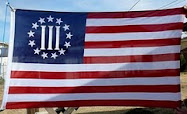
The financial crisis explained in simple terms.............................
Heidi is the proprietor of a bar in Berlin. In order to increase sales, she decides to allow her loyal customers - most of whom are unemployed alcoholics - to drink now but pay later. She keeps track of the drinks consumed on a ledger (thereby granting the customers loans).
Word gets around and as a result increasing numbers of customers flood into Heidi's bar.
Taking advantage of her customers' freedom from immediate payment constraints, Heidi increases her prices for wine and beer, the most-consumed beverages. Her sales volume increases massively.
A young and dynamic customer service consultant at the local bank recognizes these customer debts as valuable future assets and increases Heidi's borrowing limit.
He sees no reason for undue concern since he has the debts of the alcoholics as collateral.
At the bank's corporate headquarters, expert bankers transform these customer assets into DRINKBONDS, ALKBONDS and PUKEBONDS. These securities are then traded on markets worldwide. No one really understands what these abbreviations mean and how the securities are guaranteed. Nevertheless, as their prices continuously climb, the securities become top-selling items.
One day, although the prices are still climbing, a risk manager (subsequently of course fired due his negativity) of the bank decides that slowly the time has come to demand payment of the debts incurred by the drinkers at Heidi's bar.
However they cannot pay back the debts.
Heidi cannot fulfill her loan obligations and claims bankruptcy.

DRINKBOND and ALKBOND drop in price by 95 %. PUKEBOND performs better, stabilizing in price after dropping by 80 %.
The suppliers of Heidi's bar, having granted her generous payment due dates and having invested in the securities are faced with a new situation. Her wine supplier claims bankruptcy, her beer supplier is taken over by a competitor.
The bank is saved by the Government following dramatic round-the-clock consultations by leaders from the governing political parties.
The funds required for this purpose are obtained by a tax levied on the non-drinkers.
Finally an explanation I understand...and it explains the description of Wall Street Bankers spending money "like drunken sailors!"
























